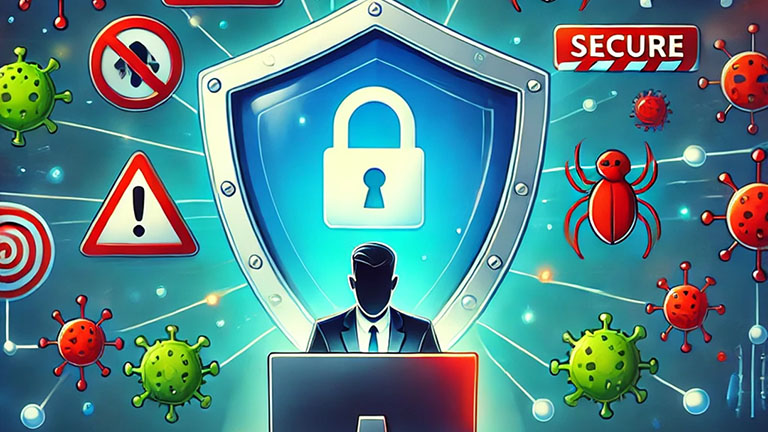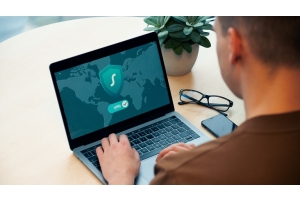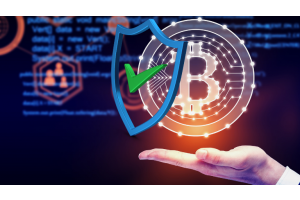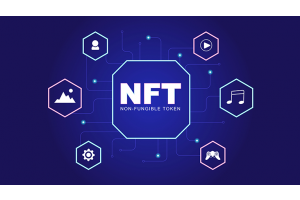Hello Guest! Welcome to Keys.Express
Safe Surfing on the Internet: How to Protect Yourself from Online Threats



Safe Surfing on the Internet: How to Protect Yourself from Online Threats
The internet is a vast playground full of possibilities – but also full of dangers. Many people are unaware of the risks or underestimate them. In this post, you’ll not only learn how to behave properly online but also how to effectively protect yourself against data theft, phishing attacks, and other cyber threats. We will provide you with practical tips that you can implement right away and warn you of common scenarios where scammers are after your data.
1. Identify Secure Websites
A fundamental tip for protecting yourself on the internet is to check websites for security. But how do you recognize a secure website?
- HTTPS vs. HTTP: Ensure that the URL starts with "https://." The “S” stands for “secure” and indicates that the data you enter on the site is transmitted in encrypted form.
- Security symbol: In most browsers, a small padlock symbol appears before the URL, confirming that the connection is encrypted.
- Check the link: Hover your mouse over a link before clicking. The destination address will appear in your browser's status bar. If the link looks suspicious or unexpected, avoid clicking on it.
2. Create Secure Passwords
Many users choose simple or identical passwords for multiple accounts – a huge risk. A strong password is one of the best ways to protect yourself against cybercrime. Here’s how:
- Length over complexity: A good password should be at least 12 characters long.
- Mix of characters: Use a combination of uppercase and lowercase letters, numbers, and special characters.
- Avoid obvious combinations: Names, birthdates, or simple sequences like "12345" are a no-go.
- Use a password manager: A password manager can help you create and securely store complex passwords, so you don’t have to remember each one.
3. Recognize and Avoid Phishing
Phishing is one of the most common methods scammers use to obtain personal data. They often disguise themselves as trusted sources, such as banks or well-known companies. How to spot phishing attempts:
- Unusual email senders: Always check the sender’s email address. Supposedly official senders may have odd or inappropriate addresses.
- Urgent language: Phishing emails often try to pressure you with messages like "Your account has been locked!" or "You must act immediately!"
- Don’t click on links or open attachments: Avoid clicking links or opening attachments in suspicious emails. If in doubt, visit the company’s official website and log in directly.
4. What Do Scammers Do with Your Data?
Many people wonder what criminals do with stolen data. The answer: a lot. Here are some examples:
- Identity theft: With your personal information, scammers can take out loans, make purchases, or even impersonate you.
- Access to accounts: If you use the same password for multiple services, hackers can use a stolen password to access your email, bank accounts, or social media.
- Dark web sales: Stolen data, especially financial information, is often sold on the dark web and reused for various purposes.
5. Dangers in Social Networks
Social networks like Facebook, Instagram, and LinkedIn are a paradise for data collectors. Here are a few scenarios of what can happen:
- Social engineering: Scammers can use information from your public profiles to carry out targeted phishing attacks or manipulate you in other ways.
- Data misuse: The more information you make public about yourself, the easier it is for third parties to use it against you – whether for advertising or criminal purposes.
- Fake profiles: Be cautious of fake profiles that contact you. They may aim to collect personal information or scam you.
6. How to Surf Safely in Public Networks
Public Wi-Fi networks, such as those in cafes or train stations, are particularly unsafe. Here are some tips to protect yourself:
- Avoid sensitive activities: Online banking or shopping should be avoided in public networks.
- Use a VPN: A VPN (Virtual Private Network) encrypts your data and protects you in unsecured networks.
- Disable automatic connections: Ensure that your device doesn’t automatically connect to public Wi-Fi without your control.
Conclusion
Safe surfing on the internet is essential to protect yourself from online threats. It’s not just about behaving politely and respectfully but also about proactively defending yourself against fraud, phishing, and data theft. By following the tips outlined here, you’re on the right path to significantly improving your digital security.










